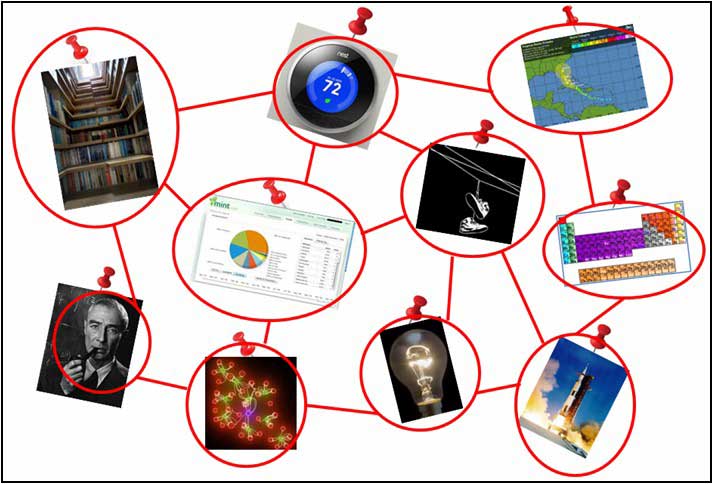Innovations from businesses are continually changing our world via new products and customer experiences. But anyone who has ever been locked in a brainstorming session knows that the hard part is the process that leads to the innovation.
True innovation is difficult to generate, and even harder to repeat. That scarcity of inspiration is what drives companies to look for new and interesting ways to acquire it.
Pinterest, a relatively new social network, provides a refreshing perspective on the pursuit of inspiration. Quickly becoming one of the more addictive sites on the Web, Pinterest is a global bulletin board for images that inspire, trigger laughter, or amuse... because they are just plain cool.
Members can post images of virtually anything, categorize them for easy reference, and create their own pinboards that contain other images of interest to them. Some of us have "lost" loved ones to Facebook or reality TV; it's a good bet that within the next year you will "lose" a loved one to Pinterest.
People use Pinterest for more reasons that I can fathom, but what struck me instantly was the spirit of innovation within the posted images. Some images show a creative combination of concepts that aren't typically associated with one another. For example, this image merges a staircase and a bookshelf by turning each step into a shelf of books.
The collection of such images, when viewed together on a page, starts to form a neural network of interconnected and inspirational ideas.

Three Innovation Lessons
So, what can your business learn from Pinterest? Here are three key lessons about innovating that businesses can borrow from Pinterest.
1. Make innovation a visual experience
Traditional brainstorming sessions use whiteboards to capture ideas with words, but the use of images and videos brings something much more sensory.
For example, a product manager for a software company might view a visually appealing trend graphic from Mint.com and find an applicable enhancement to her own product—via a much more interesting medium than a verbal description of enhanced reporting.
2. Participation breeds innovation
As Thomas Edison quipped, "To have a great idea, have a lot of them." When more than 4 million people use Pinterest to post ideas, you're bound to find some pretty amazing doses of inspiration. The site makes it uncommonly easy for millions of members to pin, search, and browse through volumes of content quickly.
Just think about what could be possible if businesses were to expand innovation efforts across the entire company, or even to customers.
3. Quick! Innovate in the next 10 minutes!
Many of us have a hard time innovating when our time for innovation is locked in a schedule between 9 AM and 10 AM on Tuesday. If your best ideas come while using the treadmill, showering, or enjoying a cup of coffee on Saturday morning, then a place to post ideas allows innovation to occur beyond calendar and time constraints. Pinterest does that exceedingly well.
Expanding the number of ideas, however, will take businesses only so far. Companies that are famous for innovation use structured approaches to channel their inspirations into new products and experiences that generate real revenue.
Structure for Maximum Impact
Here are three structural steps that can maximize the impact of those three lessons Pinterest teaches us.
1. Start with a goal
Pinterest members use the site for everything from collecting and expressing their own styles to finding sources of good ideas. Business innovation works only when a defined goal is combined with facilitation toward that goal. Examples of goals include generating new product ideas and enhancing current ones, or creating different ways to search, catalog, and connect.
2. Inspire innovation by building upon the 'known'
Most people have a hard time generating inspiring ideas out of thin air. When presented with a tangible idea, however, many of us can build upon that idea and take it a few steps further... or in a new direction entirely.
Connections are made when you associate two ideas that seemingly don't have anything to do with each other. Thermostats and iPods perform completely separate functions, but help inspire products such as the Nest (e.g., self-programming home thermostat) when brought together.
3. Encourage collaboration on top of affirmation
Many of the comments on Pinterest are affirmative (e.g., "I like it!"). Though positive feedback encourages participation, encouraging collaboration among the innovators can iteratively lead to improvisational (yet critical) steps toward a breakthrough idea.
Facilitators who draw out and link ideas via contiguity and contrast help focus the chaos of creativity into applied solutions.
As Steve Jobs once said, "Creativity is just connecting things."
* * *
Companies that infuse some of the lessons from Pinterest into their own innovation efforts are bound to find ideas that they never dreamed possible. At the very least, they'll walk away with new visions for remodeling the kitchen.



